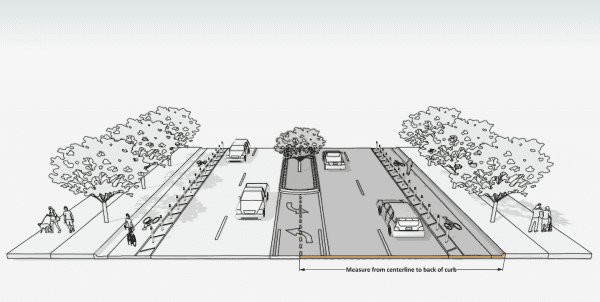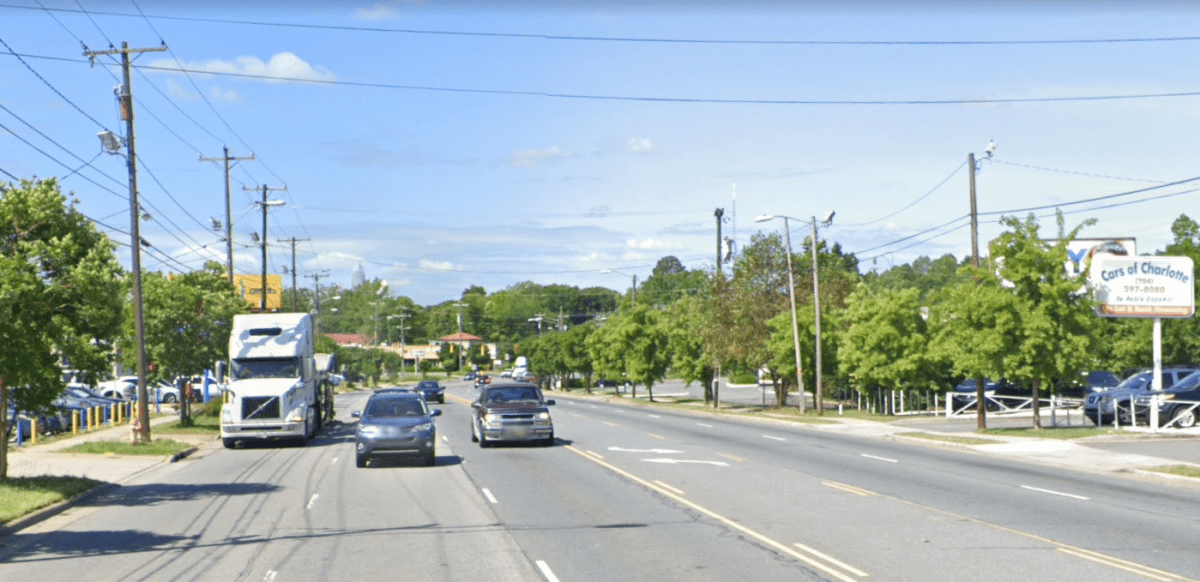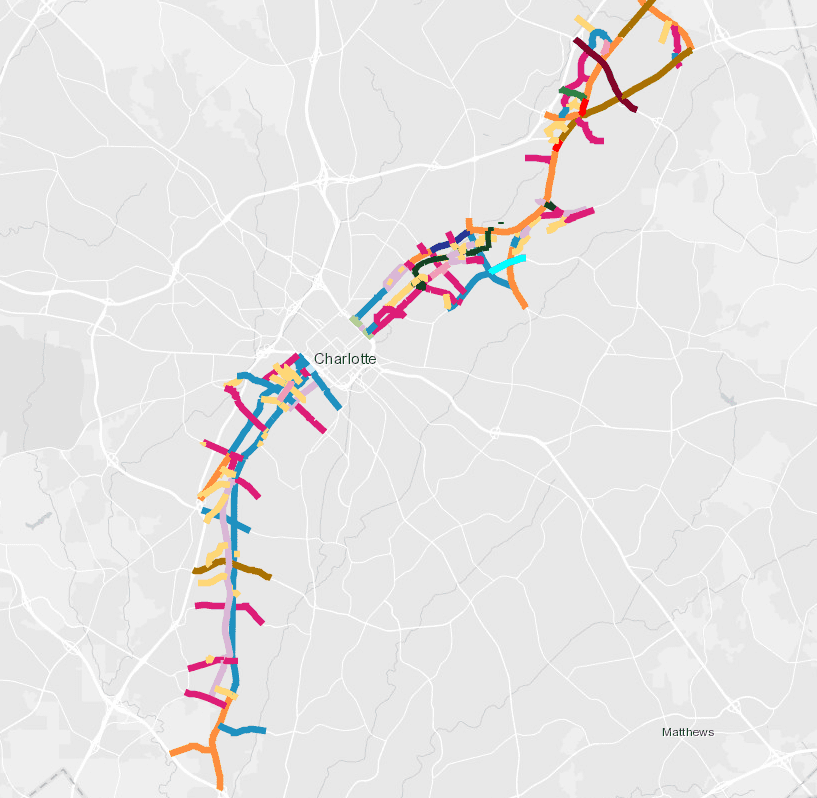Mapping out Charlotte’s future: Streets plan accounts for more than cars

Charlotte planners are trying to change the city’s decades-long focus on building streets solely for cars with an effort to map and plan for future bicycle lanes, expanded sidewalks and more accommodations for alternative ways of getting around like scooters.
The first phase of that effort — mapping and planning for the streets along the Blue Line — is nearing completion, with Charlotte City Council expected to adopt the plans Oct. 28. After that, city planners will expand the planning effort to streets along the future Gold Line streetcar and Silver Line light rail corridors, then citywide.
It’s the latest push to give people more options to get around in Charlotte, a postwar Sunbelt city where three quarters of people drive alone to work. The city is also considering spending billions on a 26-mile, east-west light rail, planning to build more protected lanes for bicyclists uptown and adopting policies to promote the “Vision Zero” program to reduce traffic deaths and injuries.
| Learn more |
|
“The streets map isn’t about new policy. It’s about combining our policies into something consistent,” said Tracy Newsome, the Charlotte official leading the effort. The wonky-sounding effort, wrapped in planning and zoning acronyms, could determine how streets in the city are built for decades to come.
But Newsome and other advocates working on the streets map plan are also quick to point out what the mapping effort doesn’t do. Despite renderings showing what the city hopes will be built on each street — protected bicycle lanes, wide sidewalks, tree-shaded medians — the new streets map doesn’t actually mandate any specific designs.
What it does is mandate how wide the streets must be from centerline to curb. The streets map is thus largely a tool to set aside enough space between curb lines to allow for future improvements, by defining the width of the whole roadway from the centerline. That would prevent, for example, someone building a new store that juts into a planned bicycle lane, even if the bicycle lane isn’t actually built for 20 years. The new streets map also doesn’t prioritize any projects or set out a timetable for building the specified improvements. Instead, new projects will be built as parcels of land in the mapping area come up for redevelopment.

North Tryon Street is near the Blue Line, but not pedestrian- or bicycle-friendly. Photo: Google Street View.
“The point is to set it up so you’re going to have a street that serves all users. Then when it comes time to do the project, you have a design,” said Newsome.
The renderings are conceptual, and what’s actually built at a given location in future years could differ substantially.
“We would try to create that type of project,” Newsome said of the renderings and possible plans. But, she adds: “It’s not a prescriptive plan.”
Jacob Horr lives several blocks from the 36th Street light rail station, in an area that’s both one of the city’s busiest for pedestrians and often cut off from surrounding neighborhoods by an assortment of railroad tracks, wide roads with fast traffic and inconsistent sidewalks. He’s president of the NoDa Neighborhood and Business Association, and said better on-street infrastructure would be a big benefit for the area.

Streets identified in the first phase of the city’s plan to map out and plan for improvements around the Blue Line. City of Charlotte.
“I think it’s good that they’re looking at it holistically. Right now, it often feels that neighborhoods are on an island. It’s not easy to get from one to another,” he said. But Horr said he’s concerned about how the city plans to implement improvements identified in the streets map piecemeal, as developers work on their individual parcels.
“Is this a 50-year infrastructure project?” Horr said. “Doing it through development is an easier way, but you’re never going to seamlessly integrate that.”
Eric Zaverl, urban design specialist at Sustain Charlotte, said the plan will likely take decades to implement. Sustain Charlotte has been providing feedback as part of a stakeholder group working with the city on the streets map.
“This is long-term,” he said. “This is not going to fix anything tomorrow…It’s very incremental by nature.”
Zaverl said Sustain Charlotte hopes to see more specificity in future plans from the city, as well as prioritization of which projects are most urgent. One particular concern: Projects that might not match up with the conceptual renderings.
“It may not look exactly like they show,” said Zaverl. “It could be better. Or it could be worse.”